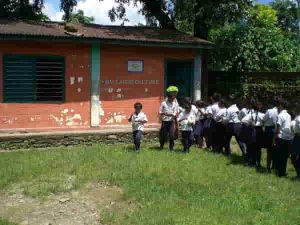As much as education should be a right, as it is in most developed countries, in developing countries such as Nepal and a few others I have lived and worked in such as Malawi, Azerbaijan and Vietnam, it’s a privilege.

In the Nepalese countryside, they are lucky if they have a school — any school — in their village. Otherwise it is usually about an hour or more walk from home. When children are required as hands at home or in the barn or the field, the chances of them attending school is small. Forget about books, stationary, uniform, lunch and some times, in some places, even teachers.
In the cities, things don’t fare much better for those coming from low socioeconomic backgrounds. The dependency of the parents on temporary, daily-wage jobs means that the family is on the move regularly. A move in residence is followed by disruptions to the children’s education — they have to move schools too.
In the eighties, when I was a student, on average about a third of primary-school age children never made it to school. Of the two-thirds that made it, a third never graduated to secondary school. The less than 50% of the school going kids who continued on to secondary school, about a third dropped out before 10th grade, the final year of school.
At the end of 10th grades, we took our High School Diploma Exams, known by the acronym SLC (School Leaving Certificate). The year I took it, only 25% passed it. The passing rate of students who attended government schools — kids from low socioeconomic backgrounds — was, and still is, considerably lower than those of private-school students.
For about every three kids from private school that passed the exams, only one from a government school passed it. Furthermore, then, as now, more students attended government schools than private school. In other words, without going into the details of the mathematics and assumptions involved, only a small, very small fraction of children from low socioeconomic background made it through the schooling system.
In those days, by my estimation, only about one out of a 100 children from low socioeconomic background graduated from high school. That’s how much of a privilege education was in Nepal.
I don’t believe things have changed much since then. Even after over two decades, the politicians and leaders who run the country are pretty much the same; they are just older, much older!

thank u so much,dorjee
You are welcome Khagendra.